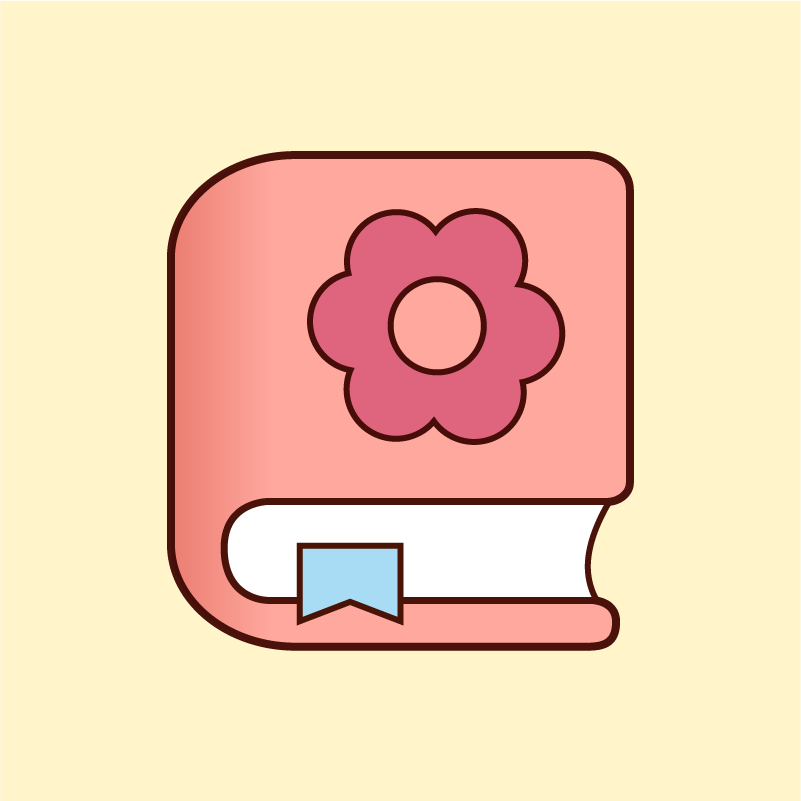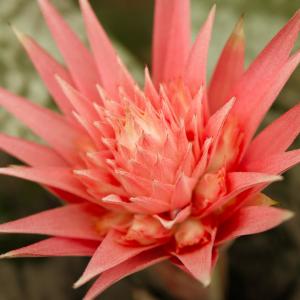文章
Miss Chen
2017年09月21日

La bromelia fasciata o Aechmea fasciata pertenece a la familia de las Bromeliáceas. Son plantas epífitas que crecen sobre los árboles, ésta en concreto es la mayor de su género. Es originaria de los bosques de América del Sur y sus hojas de color verde con manchas grises son coriáceas y forman una roseta.
La función de sus grandes hojas, de hasta 60 cm de longitud, es llevar el agua a las raíces. Esta copa central siempre debe estar llena de agua. Cuando la bromelia fasciata alcanza la edad adulta muestra una larga borla llena de flores, pero esto sucede sólo una vez y luego muere. Antes de este florecimiento desarrolla también brotes o hijuelos que garantizan su reproducción.

Para plantar nuestra bromelia prepararemos una mezcla de arena y materia orgánica descompuesta, compost o estiércol curados. La dispondremos en un lugar luminoso pero sin sol directo. Su temperatura ideal es por encima de los 15ºC. El sustrato debe manternerse siempre húmedo pero nunca encharcado. El agua de la copa central se cambiará de vez en cuando para que no se pudra. Añadiremos un poco de fertilizante al agua de riego cada 15 días.

La inforescencia rosa aparece en verano y en ella podemos ver las flores de color azulado. Aunque la planta no florece hasta los 5 años de edad. Las hojas pueden decolorarse si el ambiente es seco, es bueno mantener un plato con agua bajo la maceta. Cuando la planta se marchita tras la floración se la puede cortar por la base con cuidado para que vuelva a brotar.
La función de sus grandes hojas, de hasta 60 cm de longitud, es llevar el agua a las raíces. Esta copa central siempre debe estar llena de agua. Cuando la bromelia fasciata alcanza la edad adulta muestra una larga borla llena de flores, pero esto sucede sólo una vez y luego muere. Antes de este florecimiento desarrolla también brotes o hijuelos que garantizan su reproducción.

Para plantar nuestra bromelia prepararemos una mezcla de arena y materia orgánica descompuesta, compost o estiércol curados. La dispondremos en un lugar luminoso pero sin sol directo. Su temperatura ideal es por encima de los 15ºC. El sustrato debe manternerse siempre húmedo pero nunca encharcado. El agua de la copa central se cambiará de vez en cuando para que no se pudra. Añadiremos un poco de fertilizante al agua de riego cada 15 días.

La inforescencia rosa aparece en verano y en ella podemos ver las flores de color azulado. Aunque la planta no florece hasta los 5 años de edad. Las hojas pueden decolorarse si el ambiente es seco, es bueno mantener un plato con agua bajo la maceta. Cuando la planta se marchita tras la floración se la puede cortar por la base con cuidado para que vuelva a brotar.
0
0
文章
Dummer. ゛☀
2017年08月10日

Aechmea fasciata, the urn plant bromeliad, comes to us from the South American rainforests. It is an epiphyte, commonly called an air plant, and in the wild it grows on other plants where it receives moisture from heavy rains and nutrients from decaying debris around its roots. This is important to urn plant care in your home as you will try to mimic its natural conditions.
Tips for Urn Plant Care
In the rainforests, rainwater gathers in the stiff rosette of leaves that forms the urn. Plant care in the home consists of keeping the center filled with water at all times. For a healthy plant, the water should be emptied on refilled once a week to prevent stagnation. Watch out for dry brown edges of the leaves. It’s a sign of dehydration in your urn plant. Care should also be taken with the soil. Keep it moist, but don’t overwater. Soggy soil will cause rot at the base of your urn plant bromeliad.
You can fertilize your urn plant bromeliad by misting with a weak foliar spray or by adding a half strength solution to the water at its center once a month. If you live in a hardiness zone of 10b or 11, you can grow urn plants outside as long as you keep them well watered. They aren’t fussy about soil when grown outdoors, but caring for an urn plant indoor is a bit different. Once again, look at how they grow in the wild. Silt, decaying debris and bits of leaf and bark cling to and build up around the roots of the epiphyte. In your chosen pot at home, you should try to duplicate this soft, well aerated soil. Orchid potting mix is ideal for this or, if you prefer to mix your own, mix peat moss, perlite and finely shredded pine bark in equal parts. You need a soil that remains light and well aerated so the roots can easily spread. Urn plants prefer bright light, but not direct sun, and can suffer scorched leaves if moved too quickly from indoors to out during the summer months. They do best in temperatures between 65 and 75 F.(12-24 C.), although they can tolerate higher with regular misting.
How to Get an Urn Plant to Bloom
Almost everyone who tries to grow urn plants wants them to bloom. Those colorful, long lasting bracts rising from the center of the plant are the ultimate reward in caring for an urn plant. A plant must be at least three years old before it produces a flower stem. One of the most common complaints of gardeners is the failure of bracts to grow. Urn plants need good light and plenty of it for bract production. If light isn’t the problem, then it may be a lack of ethylene gas. To encourage blooming, try placing a quartered apple on top of the soil and using a plastic bag to cover both pot and urn plant.
Bromeliad plants bloom only once before they die, but don’t despair. They leave several lovely gifts behind. Once the bract turns brown, continue caring for your urn plant as before even as the leaves turn brown and die. Beneath the dying leaves you’ll find two or more “pups” — baby urn plants. Allow these pups to grown in place until they are 6 inches tall which usually takes five or six months, and then transfer them to pots of their own.

Tips for Urn Plant Care
In the rainforests, rainwater gathers in the stiff rosette of leaves that forms the urn. Plant care in the home consists of keeping the center filled with water at all times. For a healthy plant, the water should be emptied on refilled once a week to prevent stagnation. Watch out for dry brown edges of the leaves. It’s a sign of dehydration in your urn plant. Care should also be taken with the soil. Keep it moist, but don’t overwater. Soggy soil will cause rot at the base of your urn plant bromeliad.
You can fertilize your urn plant bromeliad by misting with a weak foliar spray or by adding a half strength solution to the water at its center once a month. If you live in a hardiness zone of 10b or 11, you can grow urn plants outside as long as you keep them well watered. They aren’t fussy about soil when grown outdoors, but caring for an urn plant indoor is a bit different. Once again, look at how they grow in the wild. Silt, decaying debris and bits of leaf and bark cling to and build up around the roots of the epiphyte. In your chosen pot at home, you should try to duplicate this soft, well aerated soil. Orchid potting mix is ideal for this or, if you prefer to mix your own, mix peat moss, perlite and finely shredded pine bark in equal parts. You need a soil that remains light and well aerated so the roots can easily spread. Urn plants prefer bright light, but not direct sun, and can suffer scorched leaves if moved too quickly from indoors to out during the summer months. They do best in temperatures between 65 and 75 F.(12-24 C.), although they can tolerate higher with regular misting.

How to Get an Urn Plant to Bloom
Almost everyone who tries to grow urn plants wants them to bloom. Those colorful, long lasting bracts rising from the center of the plant are the ultimate reward in caring for an urn plant. A plant must be at least three years old before it produces a flower stem. One of the most common complaints of gardeners is the failure of bracts to grow. Urn plants need good light and plenty of it for bract production. If light isn’t the problem, then it may be a lack of ethylene gas. To encourage blooming, try placing a quartered apple on top of the soil and using a plastic bag to cover both pot and urn plant.

Bromeliad plants bloom only once before they die, but don’t despair. They leave several lovely gifts behind. Once the bract turns brown, continue caring for your urn plant as before even as the leaves turn brown and die. Beneath the dying leaves you’ll find two or more “pups” — baby urn plants. Allow these pups to grown in place until they are 6 inches tall which usually takes five or six months, and then transfer them to pots of their own.
0
0








